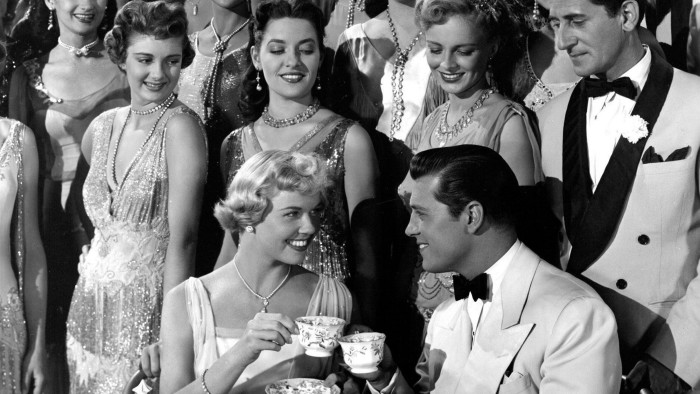Unlock the Editor’s Digest for free
Roula Khalaf, Editor of the FT, selects her favourite stories in this weekly newsletter.
First released 100 years ago, “Tea for Two” is an adorable jazz standard about Britain’s favourite drink — written by two coffee-swigging Americans. The song’s surprising history connects it to the “curse” of an American baseball team and a bet made by Russian composer Dmitri Shostakovich.
The quirky, repetitive tune popped into the head of New York-born composer Vincent Youmans during the first world war, in which he was drafted into the US Navy. He never saw combat and focused on writing troop shows while stationed in Illinois.
After the war he set up in Tin Pan Alley and was invited to work with Irving Caesar, writing additional songs for Otto Harbach and Frank Mandel’s 1924 musical No, No, Nanette. Youmans revived his tune, while the chirpy lyrics celebrating the simple joys of romantic domesticity came courtesy of Caesar (best known for writing 1919’s “Swanee” with George Gershwin).
A crime caper about three couples caught up in a blackmail scheme, No, No, Nanette was based on Mandel’s 1919 play My Lady Friends. This was financed by Broadway producer Harry Frazee, who was also the owner of baseball team the Boston Red Sox. Many sports fans believe that Frazee sold the team’s premier slugger, Babe “The Bambino” Ruth, to the New York Yankees that year (for an estimated $100,000) to help fund the show. After Ruth began swinging for the Yankees in 1920, the Red Sox failed to win a championship for 86 years — a period known to Bostonians as “The Curse of the Bambino”.
Some think the song’s title is a nod to English street traders undercutting rivals selling tea for thruppence, but its origins probably lie in a straightforward café or tea shop order. Its aspirational narrative might strike a chord with young couples yearning for home ownership today. It begins: “I’m discontented with homes that are rented, so I have invented my own/Darling this place is a lover’s oasis . . . Cosy to hide in, to live side by side in, don’t let it abide in my dream.”
Let us know your memories of ‘Tea for Two’ in the comments section below
The paperback edition of ‘The Life of a Song: The stories behind 100 of the world’s best-loved songs’, edited by David Cheal and Jan Dalley, is published by Chambers
Music credits: Zip Media; Vintage; Naxos; Music and Arts Programs of America; The Verve/Universal; Decca; Columbia/Sony; Heinz
Read the full article here

